
Grappling is a fighting technique based on throws, trips, sweeps, clinch fighting, ground fighting and submission holds.

Martial arts are codified systems and traditions of combat practiced for a number of reasons such as self-defence; military and law enforcement applications; competition; physical, mental, and spiritual development; entertainment; and the preservation of a nation's intangible cultural heritage.
Randori (乱取り) is a term used in Japanese martial arts to describe free-style practice (sparring). The term denotes an exercise in 取り tori, applying technique to a random succession of uke attacks.
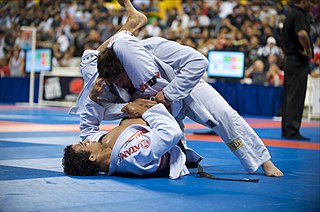
Brazilian jiu-jitsu, often abbreviated to BJJ, is a self-defense martial art and combat sport based on grappling, ground fighting, and submission holds. It is primarily a ground-based fighting style and focuses on taking one's opponent down to the ground, gaining a dominant position, and using a number of techniques to force them into submission via joint locks, chokeholds, or compression locks.
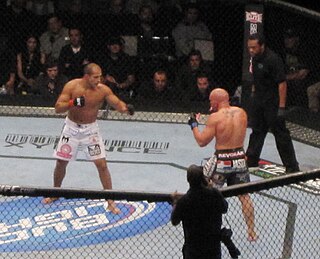
Mixed martial arts (MMA) is a full-contact fighting sport based on striking and grappling, incorporating techniques from various combat sports from around the world.

Chinese martial arts, commonly referred to with umbrella terms kung fu, kuoshu or wushu, are multiple fighting styles that have developed over the centuries in Greater China. These fighting styles are often classified according to common traits, identified as "families" of martial arts. Examples of such traits include Shaolinquan (少林拳) physical exercises involving All Other Animals (五形) mimicry or training methods inspired by Old Chinese philosophies, religions and legends. Styles that focus on qi manipulation are called internal, while others that concentrate on improving muscle and cardiovascular fitness are called external. Geographical associations, as in northern and southern, is another popular classification method.

Vale Tudo or vale-tudo, also known as No Holds Barred (NHB) in the United States, is an unarmed, full-contact combat sport with relatively few rules. It became popular in Brazil during the 20th century and would eventually evolve into modern mixed martial arts (MMA). For years, "Vale Tudo" was used as a synonym for MMA in Brazil, but the term fell into disuse due to the emergence of stricter rules and the influence of the media to have a more "civilized" name. It is now used to refer to an early, more rules-free stage of the modern sport.
The following outline is provided as an overview of and topical guide to martial arts:
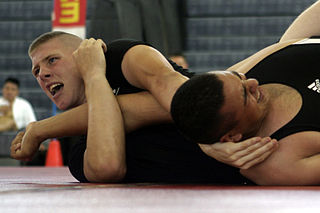
Submission wrestling, also known as submission grappling, submission fighting, or simply grappling, is a martial art and combat sport that focuses on ground fighting and submission techniques. It is a hybrid discipline that incorporates elements of various martial arts such as various wrestling styles, judo, and Brazilian jiu-jitsu. Submission wrestling is practiced both as a competitive sport and as a training method for self-defence and mixed martial arts (MMA).

Shadowboxing is a combat sport exercise in which a person throws punches at the air as though there is an opponent. Practised primarily in boxing, it is used mainly to prepare the muscles before the person training engages in stronger physical activity. Muhammad Ali once performed a now famous shadowboxing routine next to Howard Cosell for ABC's Wide World of Sports television cameras. Black Nova Scotian boxer George Dixon is widely credited for developing the technique.

Sparring is a form of training common to many combat sports including kickboxing. Although the precise form varies, it is essentially relatively 'free-form' fighting, with enough rules, customs, or agreements to minimize injuries. By extension, argumentative debate is sometimes called sparring.
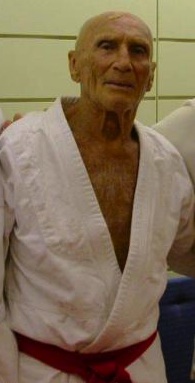
Hélio Gracie was a Brazilian martial artist who together with his brothers Oswaldo, Gastao Jr, George and Carlos Gracie founded and developed the self-defense martial art system of Gracie jiu-jitsu, also known as Brazilian jiu-jitsu (BJJ).
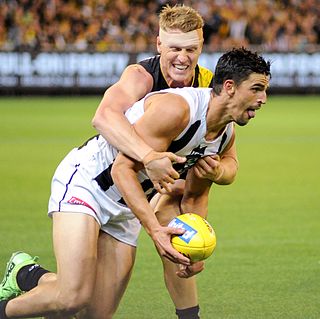
A contact sport is any sport where physical contact between competitors, or their environment, is an integral part of the game. For example, gridiron football. Contact may come about as the result of intentional or incidental actions by the players in the course of play. This is in contrast to noncontact sports where players often have no opportunity to make contact with each other and the laws of the game may expressly forbid contact. In contact sports some forms of contact are encouraged as a critical aspect of the game such as tackling, while others are incidental such as when shielding the ball or contesting an aerial challenge. As the types of contact between players is not equal between all sports they define the types of contact that is deemed acceptable and fall within the laws of the game, while outlawing other types of physical contact that might be considered expressly dangerous or risky such as a high tackle or spear tackle, or against the spirit of the game such as striking below the belt or other unsportsmanlike conduct. Where there is a limit as to how much contact is acceptable most sports have a mechanism to call a foul by the referee, umpire or similar official when an offence is deemed to have occurred.

Carlson Gracie was a practitioner of Brazilian jiu-jitsu. A member of the Gracie family, he was the eldest son of Carlos Gracie, and nephew to Hélio Gracie, founders of Gracie jiu-jitsu.
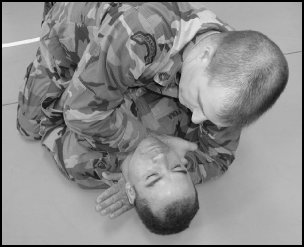
Sode guruma jime (袖車絞め) is a type of Judo chokehold (shime-waza), which compresses the opponent’s trachea or the carotid arteries.

Jujutsu, also known as jiu-jitsu and ju-jitsu, is a family of Japanese martial arts and a system of close combat that can be used in a defensive or offensive manner to kill or subdue one or more weaponless or armed and armored opponents. It was coined by Hisamori Tenenuchi when he officially established the first school of jiu-jitsu in Japan. A subset of techniques from certain styles of jujutsu were used to develop many modern martial arts and combat sports, such as judo, aikido, sambo, Brazilian jiu-jitsu, ARB and mixed martial arts.
Atemi Ju-Jitsu, in Japanese: Atemi (当て身) Jujutsu (柔術), also called Pariset Ju-Jitsu, was established in France in the 1940s by the late Judo and Ju-Jitsu legend Bernard Pariset to revive and preserve old martial techniques inherited from Feudal Japan.

Suffrajitsu is a term used to describe the application of martial arts or self-defence techniques by members of the Women's Social and Political Union during 1913/14. The term derives from a portmanteau of suffragette and jiu-jitsu and was first coined by an anonymous English journalist during March 1914.
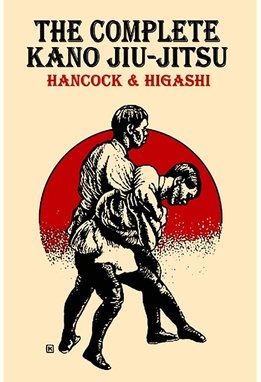
The Complete Kano Jiu-Jitsu (Judo) (1905) is a martial arts manual that documents a system of jiu-jitsu that was taught by a Japanese Instructor at the United States Naval Academy. It was written by H. Irving Hancock as part of a series of books on Japanese martial arts, with technical expertise from Katsukuma Higashi, a practitioner of 'Kano Jiu Jitsu'.
















